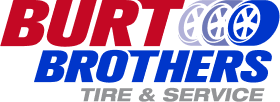Preventative maintenance should be a top priority for every driver. But, it is never convenient and often falls to the bottom of the list of things to do.
Why is it important?
It is one of the best ways to keep your vehicle’s vital mechanical systems in efficient working order and will help avoid issues that could leave you stranded on the side of the road.
A car is a substantial investment, and performing regular maintenance will go a long way in reducing problems and extending the life of your car, as well as alerting you to issues that need to be fixed. Ignoring the upkeep of your vehicle can lead to premature wear and tear, poor vehicle performance, and reduced fuel economy.
The hundreds of parts – hoses, filters, and belts – all work together to help your vehicle run properly. If something goes wrong with one part, it could lead to problems in other areas, creating a domino effect.
Getting your vehicle serviced according to the schedule of the manufacturer, however, keeps all the parts working in composite order. It can be difficult to remember all of the tasks that need to be done. For help tracking the maintenance recommendations, check your vehicle manufacturer’s recommendations or consult with your trusted mechanic.
Here are seven items that should be on your list of maintenance to perform regularly:
1. Filters:
- Engine Air Filter: Your engine air filter should be inspected at every oil change. It should also be replaced every year or if it shows any indication of contamination.
- Oil, Filter Changes, and Lubricants: You should be getting your oil and filter changes done every three months or after every 3,000 miles if your vehicle uses conventional oil. Oil changes can be done less frequently with synthetic or other types of oil. While many vehicles come with lifetime lube, lots of other vehicles still require a regular lube service. Lubrication may also be needed for all suspension and steering parts.
- Cabin Filter: Replace once a year or when clogged and dirty.
- Fuel Filter: Replace the fuel filter every 24,000 miles or after two years.
2. Fluids:
- Automatic Transmission Fluid: Replace after 24,000 miles or after two years.
- Differential Fluid and Manual Transmission: These should be checked at every oil change and replaced after 50,000 miles or every four years.
- Power Steering Fluid: This fluid should be replaced after 24,000 miles or every two years.
- Coolant: Your engine’s coolant should be changed after 24,000 miles or every two years. It should be regularly checked to make sure that it stays at sufficient levels.
- Windshield Washer Fluid: Check every month to make sure that you have enough windshield fluid and fill accordingly with temperature-appropriate washer fluid.
3. Hoses and Belts: These should be inspected at every oil change. If hoses are leaking, worn, rusted, or cracked, then you should get those replaced. Your mechanic should also look at the serpentine belts and V-belts’ condition. These should be replaced if worn, frayed, or cracked.
4. Battery: You should test your car battery after three years and replace it if necessary. When you get your oil changed, your mechanic can check the battery connection to be sure that it is not overly corroded..
5. Brake Service: Get your whole brake system checked yearly. You’ll also want to get its brake fluid replaced after 24,000 miles or every other year.
6. Get a Tune-Up: Take a look at the manufacturer’s recommendation and replace the oxygen sensor accordingly. Also, see at what intervals you should get your spark plug replaced. This may range between 30,000-100,000 miles.
7. Seasonal Maintenance:
Driving in snowy conditions can be especially difficult and dangerous, so yearly maintenance before winter can help you feel more confident about your vehicle’s ability to drive safely during the winter. Some of these tasks include getting your tires rotated, switching to snow tires, checking your wheel alignment, checking the exhaust system, and more, according to your vehicle’s seasonal needs.
Conclusion:
Preventative maintenance may also feel like a hassle to consistently remember when there are so many parts and fluids that need attention. Consult your vehicle’s guide. Then, schedule your vehicle’s maintenance on the calendar so that you can take care of each item on time.
Your local Salt Lake auto repair and tire shop can help you stay on top of your maintenance list. By performing preventative maintenance now, you can save thousands later on costly repairs. Scheduling regular checkups and other services with your Utah auto shop now may feel like an inconvenience now, but the eventual payoff in a well-maintained vehicle over the long term is worth it.





